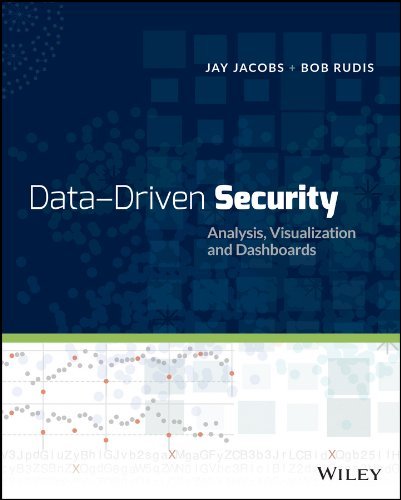When I saw the bombastic headline “North Carolina is no longer classified as a democracy” pop up in my RSS feeds today (article link: http://www.newsobserver.com/opinion/op-ed/article122593759.html) I knew it’d help feed polarization bear that’s been getting fat on ‘Murica for the past decade. Sure enough, others picked it up and ran with it. I can’t wait to see how the opposite extreme reacts (everybody’s gotta feed the bear).
As of this post, neither site linked to the actual data, so here’s an early Christmas present: The Electoral Integrity Project Data. I’m very happy this is public data since this is the new reality for “news” intake:
- Read shocking headline
- See no data, bad data, cherry-picked data or poorly-analyzed data
- Look for the actual data
- Validate data & findings
- Possibly learn even more from the data that was deliberately left out or ignored
Data literacy is even more important than it has been.
Back to the title of the post: where exactly does North Carolina fall on the newly assessed electoral integrity spectrum in the U.S.? Right here (click to zoom in):
Focusing solely on North Carolina is pretty convenient (I know there’s quite a bit of political turmoil going on down there at the moment, but that’s no excuse for cherry picking) since — frankly — there isn’t much to be proud of on that entire chart. Here’s where the ‘States fit on the global rankings (we’re in the gray box):
You can page through the table to see where our ‘States fall (we’re between Guana & Latvia…srsly). We don’t always have the nicest neighbors:
This post isn’t a commentary on North Carolina, it’s a cautionary note to be very wary of scary headlines that talk about data but don’t really show it. It’s worth pointing out that I’m taking the PEI data as it stands. I haven’t validated the efficacy of their process or checked on how “activist-y” the researchers are outside the report. It’s somewhat sad that this is a necessary next step since there’s going to be quite a bit of lying with data and even more lying about-and/or-without data over the next 4+ years on both sides (more than in the past eight combined, probably).
The PEI folks provide methodology information and data. Read/study it. They provide raw and imputed confidence intervals (note how large some of those are in the two graphs) – do the same for your research. If their practices are sound, the ‘States chart is pretty damning. I would hope that all the U.S. states would be well above 75 on the rating scale and the fact that we aren’t is a suggestion that we all have work to do right “here” at home, beginning with ceasing to feed the polarization bear.
If you do download the data, here’s the R code that generated the charts:
library(tidyverse)
# u.s. ------------------------------------------------------------------------------
eip_state <- read_tsv("~/Data/eip_dataverse_files/PEI US 2016 state-level (PEI_US_1.0) 16-12-2018.tab")
arrange(eip_state, PEIIndexi) %>%
mutate(state=factor(state, levels=state)) -> eip_state
ggplot() +
geom_linerange(data=eip_state, aes(state, ymin=PEIIndexi_lci, ymax=PEIIndexi_hci), size=0.25, color="#2b2b2b00") +
geom_segment(data=eip_state, aes(x="North Carolina", xend="North Carolina", y=-Inf, yend=Inf), size=5, color="#cccccc", alpha=1/10) +
geom_linerange(data=eip_state, aes(state, ymin=PEIIndexi_lci, ymax=PEIIndexi_hci), size=0.25, color="#2b2b2b") +
geom_point(data=eip_state, aes(state, PEIIndexi, fill=responserate), size=2, shape=21, color="#2b2b2b", stroke=0.5) +
scale_y_continuous(expand=c(0,0.1), limits=c(0,100)) +
viridis::scale_fill_viridis(name="Response rate\n", label=scales::percent) +
labs(x="Vertical lines show upper & lower bounds of the 95% confidence interval\nSource: PEI Dataverse (https://dataverse.harvard.edu/dataset.xhtml?persistentId=doi:10.7910/DVN/YXUV3W)\nNorris, Pippa; Nai, Alessandro; Grömping, Max, 2016, 'Perceptions of Electoral Integrity US 2016 (PEI_US_1.0)'\ndoi:10.7910/DVN/YXUV3W, Harvard Dataverse, V1, UNF:6:1cMrtJfvUs9uBoNewfUKqA==",
y="PEI Index (imputed)",
title="Perceptions of Electoral Integrity: U.S. 2016 POTUS State Ratings",
subtitle="The PEI index is designed to provide an overall summary evaluation of expert perceptions that an election\nmeets international standards and global norms. It is generated at the individual level. Unlike the individual\nindex (PEIIndex) PEIIndexi is imputed and thus fully observed for all experts and states.") +
hrbrmisc::theme_hrbrmstr(grid="Y", subtitle_family="Hind Light", subtitle_size=11) +
theme(axis.text.x=element_text(angle=90, vjust=0.5, hjust=1)) +
theme(axis.title.x=element_text(margin=margin(t=15))) +
theme(legend.position=c(0.8, 0.1)) +
theme(legend.title.align=1) +
theme(legend.title=element_text(size=8)) +
theme(legend.key.size=unit(0.5, "lines")) +
theme(legend.direction="horizontal") +
theme(legend.key.width=unit(3, "lines"))
# global ----------------------------------------------------------------------------
eip_world <- read_csv("~/Data/eip_dataverse_files/PEI country-level data (PEI_4.5) 19-08-2016.csv")
arrange(eip_world, PEIIndexi) %>%
mutate(country=factor(country, levels=country)) -> eip_world
ggplot() +
geom_linerange(data=eip_world, aes(factor(country), ymin=PEIIndexi_lci, ymax=PEIIndexi_hci), size=0.25, color="#2b2b2b00") +
geom_linerange(data=eip_world, aes(factor(country), ymin=PEIIndexi_lci, ymax=PEIIndexi_hci), size=0.25, color="#2b2b2b") +
geom_point(data=eip_world, aes(country, PEIIndexi), size=2, shape=21, fill="steelblue", color="#2b2b2b", stroke=0.5) +
scale_y_continuous(expand=c(0,0.1), limits=c(0,100)) +
labs(x="Vertical lines show upper & lower bounds of the 95% confidence interval\nSource: PEI Dataverse (https://dataverse.harvard.edu/dataset.xhtml?persistentId=doi:10.7910/DVN/LYO57K)\nNorris, Pippa; Nai, Alessandro; Grömping, Max, 2016, 'Perceptions of Electoral Integrity (PEI-4.5)\ndoi:10.7910/DVN/LYO57K, Harvard Dataverse, V2",
y="PEI Index (imputed)",
title="Perceptions of Electoral Integrity: 2016 Global Ratings",
subtitle="The PEI index is designed to provide an overall summary evaluation of expert perceptions that an election\nmeets international standards and global norms. It is generated at the individual level. Unlike the individual\nindex (PEIIndex) PEIIndexi is imputed and thus fully observed for all experts and countries") +
hrbrmisc::theme_hrbrmstr(grid="Y", subtitle_family="Hind Light", subtitle_size=11) +
theme(axis.text.x=element_blank()) +
theme(axis.title.x=element_text(margin=margin(t=15)))



Pingback: North Carolina’s Neighborhood – Cyber Security
Pingback: North Carolina’s Neighborhood – sec.uno